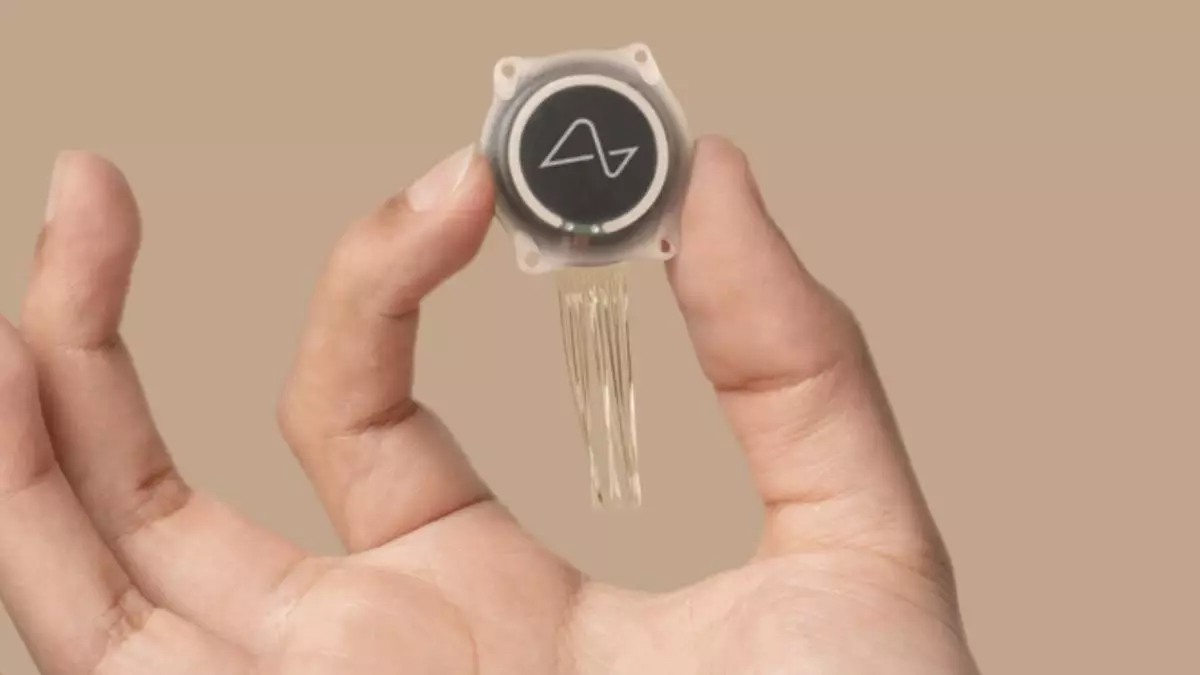Elon Musk’s Neuralink has made headlines again with its innovative Blindsight brain implant, a device that promises to revolutionize the way we understand vision and its restoration. Recently achieving the esteemed Breakthrough Device Designation from the FDA, this advancement has sparked discussions across the medical and technological fields. Yet, amid excitement, skepticism looms regarding the actual implications and feasibility of the technology, not to mention the ambitious claims that accompany it.
Musk has painted a vivid picture in his communications, drawing parallels with pop culture icons like Geordi La Forge from Star Trek, who navigated his world with an advanced visor that provided enhanced vision capabilities. Musk’s vision for Blindsight is similarly grand: it’s not merely about restoring lost sight but enabling individuals blind from birth to experience the world visually for the first time. According to Musk, the device could even empower those who have completely lost their visual pathways—if their visual cortex remains intact—to perceive their environment, opening doors to possibilities previously deemed inconceivable.
While the concept is intriguing, it invites a range of questions about how realistic these aspirations are. Although Musk has emphasized the transformative potential of Blindsight, the inherent complexities of translating neural signals into coherent visual experiences cannot be overlooked.
At the core of the Blindsight device lies a microelectrode array designed to stimulate neurons within the visual cortex. Although this fundamental technique isn’t novel—numerous studies have sought to achieve similar outcomes—the challenge lies in its execution and efficacy. Musk’s comments about initially offering low-resolution visual experiences likened to “Atari graphics” prompt further inquiry into the scalability of the technology. With existing implants boasting only a handful of electrodes, the journey from rudimentary visual input to a fully formed perception of the world presents substantial hurdles.
Furthermore, Musk’s assertions about enhancing vision to include infrared or ultraviolet wavelengths raise the question of whether such adaptations will genuinely resonate with those who lack prior visual experiences. The transformation from electrical impulses to meaningful visual interpretation is fraught with challenges, and the simplistic framing of this process does a disservice to the complexities involved.
Critics have rightly pointed out that the prospect of enabling sight in individuals blind from birth opens a Pandora’s box of complications. The brain’s adaptation to sensory inputs is a nuanced process, reliant on not just the biological machinery of vision but also on experiential learning. For those who have never seen, the absence of a framework for interpreting visual information could complicate any potential successes with Blindsight. Misleading terminology and promising statements surrounding this technology risk unearned hope among those desperate for advancements in vision restoration.
Experts emphasize that while the visual cortex may physically be capable of processing visual information, the lack of prior experience could leave blind individuals struggling to contextualize what they see, leading to a dissonance that Musk’s rhetoric glosses over.
As Musk continues to spearhead Neuralink with his trademark bravado, ethical considerations loom large. The ambitious claims about Blindsight should be weighed against the potential for misunderstanding and misrepresentation of the blind and low-vision community’s realities. The perception that sight can simply be switched on or off by technology obscures the complex emotional and psychological dimensions associated with vision loss.
Musk’s tendency for grandstanding—a hallmark of his various ventures from electric vehicles to space travel—raises questions about accountability in medical innovation. As Neuralink proceeds through experimentation and ultimately seeks broader acceptance of its technology, striking a balance between visionary ambition and realistic outcomes becomes imperative.
Neuralink’s Blindsight represents a remarkable leap toward merging technology and human capabilities, yet it has stirred necessary conversations about the ethical, emotional, and physical intricacies involved in such advancements. While the potential promises of this brain implant inspire awe, it remains essential to approach these developments with a sense of caution, continuing dialogue, and a commitment to addressing the nuanced realities faced by those seeking to regain or redefine their sight.

